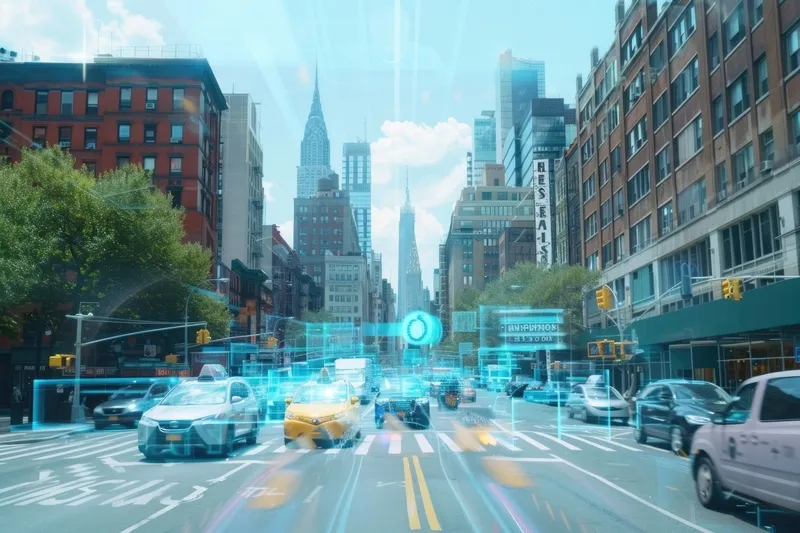The announcement by the United States Government announcement that it will begin taking steps to enable vehicle-to-vehicle (V2V) communication technology for light vehicles has been welcomed by ITS Australia, which said it is pivotal in taking road safety to the next level.
This technology improves safety by allowing vehicles to ‘talk’ to each other and exchange basic safety data, such as speed, position and projected path, ten times per second. The US Department of Transportation (DOT) announcement inc
February 17, 2014
Read time: 3 mins
The announcement by the United States Government announcement that it will begin taking steps to enable vehicle-to-vehicle (V2V) communication technology for light vehicles has been welcomed by 858 ITS Australia, which said it is pivotal in taking road safety to the next level.
This technology improves safety by allowing vehicles to ‘talk’ to each other and exchange basic safety data, such as speed, position and projected path, ten times per second. The324 US Department of Transportation (DOT) announcement includes ‘multiple layers of security and privacy protection’.
The834 National Highway Traffic Safety Administration (NHTSA) is now finalising the analysis of the data from this study. NHTSA will then begin working on a regulatory proposal that would require V2V devices in new vehicles in a future year, consistent with applicable legal requirements, Executive Orders, and guidance. DOT believes that the signal this announcement sends to the market will significantly enhance development of this technology and pave the way for market penetration of V2V safety applications.
ITS Australia chief executive officer Susan Harris said: “Passive safety products, such as seat belts and air bags that protect people in a crash, have greatly reduced road trauma. V2V technology is the next major step forward. This active safety system enables real time communication between vehicles to help avoid collisions in the first place.”
US DOT Secretary Anthony Foxx said V2V technology has the potential to avoid 70 to 80 per cent of crashes that involve unimpaired drivers. The DOT approval follows almost a decade of testing and a rigorous Safety Pilot Model Deployment study begun in 2012 in Michigan involving almost 3,000 cars, buses, trucks and motorcycles equipped with 5.9 GHz dedicated short-range communications (DSRC) radios.
“Australia’s innovative ITS industry is at the forefront of the V2V technology proven in this Safety Pilot Model Deployment study. We are also international leaders in other intelligent transport systems technologies,” said Susan Harris.
To capitalise on and grow the advanced capabilities of the local ITS industry, ITS Australia is working with the local ITS industry, led by the University of South Australia, to establish an Intelligent Transport Cooperative Research Centre (CRC) to drive further research.
Susan Harris said a CRC will ensure that Australia continues to be a leader in the competitive high technology international transport market. “The fact that we have the skills and drive for innovation is proven by the fact that creative Australian businesses are producing world’s best practice ITS solutions – and are achieving significant exports,” she said.
This technology improves safety by allowing vehicles to ‘talk’ to each other and exchange basic safety data, such as speed, position and projected path, ten times per second. The
The
ITS Australia chief executive officer Susan Harris said: “Passive safety products, such as seat belts and air bags that protect people in a crash, have greatly reduced road trauma. V2V technology is the next major step forward. This active safety system enables real time communication between vehicles to help avoid collisions in the first place.”
US DOT Secretary Anthony Foxx said V2V technology has the potential to avoid 70 to 80 per cent of crashes that involve unimpaired drivers. The DOT approval follows almost a decade of testing and a rigorous Safety Pilot Model Deployment study begun in 2012 in Michigan involving almost 3,000 cars, buses, trucks and motorcycles equipped with 5.9 GHz dedicated short-range communications (DSRC) radios.
“Australia’s innovative ITS industry is at the forefront of the V2V technology proven in this Safety Pilot Model Deployment study. We are also international leaders in other intelligent transport systems technologies,” said Susan Harris.
To capitalise on and grow the advanced capabilities of the local ITS industry, ITS Australia is working with the local ITS industry, led by the University of South Australia, to establish an Intelligent Transport Cooperative Research Centre (CRC) to drive further research.
Susan Harris said a CRC will ensure that Australia continues to be a leader in the competitive high technology international transport market. “The fact that we have the skills and drive for innovation is proven by the fact that creative Australian businesses are producing world’s best practice ITS solutions – and are achieving significant exports,” she said.








